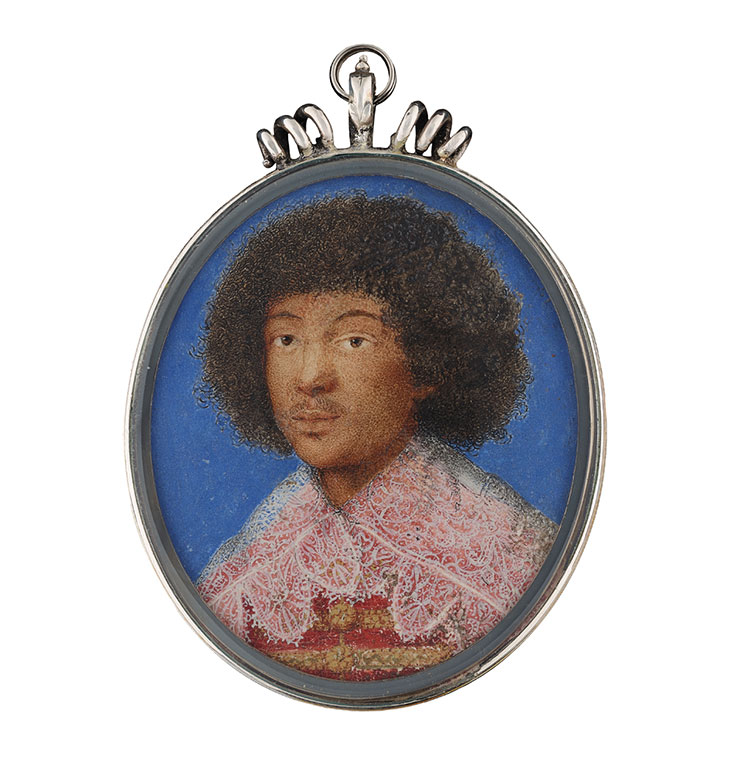In 1973 Sir Harold Acton wrote that ‘paintings of botanical and ornithological subjects […] are overlooked among the spectacular masterpieces of the Florentine galleries’. They have since then been rediscovered and among such works the still lifes of Giovanna Garzoni (1600–70) are worthy of special attention. Garzoni was one of the most accomplished botanical artists of the 17th century, whose wonderfully refined paintings hover between the realms of scientific illustration and aesthetic delight. They are the focus of an exhibition that was meant to open in March at the Palazzo Pitti, and is now on view until the end of June.
Garzoni was born into an artistic family in Ascoli Piceno in the Marche and worked in a number of cities in the Italian peninsula cities, always attracting distinguished patronage. Visits to Rome enabled her to connect with the antiquarian and collector Cassiano dal Pozzo and the circle around the scientific Accademia dei Lincei, which was founded in 1603 and valued empirical, observational research (it was named after the lynx, a creature renowned for its sharp vision). She was encouraged to dedicate herself to botanical painting and although her reputation chiefly now rests on the still lifes created in this context, her output was very varied, including portraits, miniatures, depictions of sacred and mythic themes, calligraphy and copies of Old Masters. From 1625 Garzoni was in Venice and five years later she found employment in Naples, serving at the court of the Spanish Duke of Alcalá. Turning north again, from 1632 to 1637 she worked in Turin, in the employ of the Duke of Savoy. It was here that she created the fascinating miniature portrait of the Ethiopian, Zaga Christ (1635), which features in the current exhibition, courtesy of Philip Mould.
Portrait of Zaga Christ (1635), Giovanna Garzoni. Courtesy Philip Mould and Company

A brief period in Paris is documented in 1640; however, perhaps Garzoni’s greatest period of productivity and renown was achieved in Florence in the 1640s. It was there that she worked for Grand Duke Ferdinand II and Grand Duchess Vittoria della Rovere, as well as the brothers of the Grand Duke. While creating self-contained botanical and still-life studies for them, she also produced designs for works in other media, including fans and pietre dure panels. From the mid 1650s Garzoni was connected with the Accademia di San Luca back in Rome, to which she bequeathed her papers, sample book and art collection.
Plate with Cherries, a Bean Pod and a Bee (c. 1655–62), Giovanna Garzoni. Gallerie degli Uffizi, Florence

The style of still-life painting she perfected, working in gouache on vellum, was characterised by brilliant colours; the forms of blooms and fruit were usually built up meticulously with minute dots of paint and it was through such a precise technique that she was able to convey an unerring sensitivity to nuances of texture and form. She must have worked slowly and the fruit and flowers matured under her gaze; leaves wither, figs split open, cherries and peaches are at their most splendid, and strawberries and artichokes have to be eaten soon. Her paintings are carefully composed, often with a strong decorative sensibility, and feature a fascinating combination of native flora and fauna along with exotic additions that allude to the wealth and horticultural skills of her Medici patrons.
Chinese Vase with Tulips, Anemones and Jonquils, with a Fig and a Fava Bean (c. 1650–55), Giovanna Garzoni. Gallerie degli Uffizi, Florence

In terms of the evolution of Tuscan botanical illustration and still-life painting Garzoni’s career falls between that of Jacopo Ligozzi (1547–1626) and the later, refulgent creations of Bartolomeo Bimbi (1648–1729). It is with the restraint and elegance of Ligozzi’s work, however, that she has far more in common. His botanical studies conformed to the pictorial conventions established for herbals, and she certainly worked in this manner, but she also painted more expansively, creating independent still lifes and inferring the passage of time and a far wider set of cultural references: the chips on bowls and bloom on fruit, which is just about to pass the point at which it would be edible, are lovingly recorded. Flies, butterflies, snails, grasshoppers and occasionally birds land on the tables where her subjects are laid out for scrutiny. Touches of the exotic also appear, including shells from the Pacific, Chinese vases, English dogs and species of flowers and vegetables from the Americas cultivated in Europe, at great expense.
Lapdog with Biscotti and a Chinese Cup (c. 1648), Giovanna Garzoni. Gallerie degli Uffizi, Florence

During the reign of Ferdinand his botanical gardens were restored, flowers became a decorative feature in the interiors of the Palazzo Pitti and still-life paintings from the Netherlands and Flanders entered the Medici collections. It was in this environment of floral fever that Garzoni’s studies became highly valued and related to wider, burgeoning international trends in exploration, horticulture, collecting and classification. But her mature works are never just sterile illustrations; they have a sensory immediacy and it’s not hard to see why they were so highly prized by scientists and art collectors.
Garzoni has gradually become better known since the 1960s, with her paintings featuring in exhibitions of still lifes and scholarly reappraisals, being snapped up when they occasionally appear at auction, and being used to illustrate Tuscan cookbooks. At a time when other women artists of the 16th and 17th centuries, such as Artemisia Gentileschi, are being reappraised, it’s appropriate to pay new attention to Garzoni’s quieter but nonetheless compelling art, which embodies a powerful sense of curiosity about the giddying variety of the natural world and distils it into images of great sophistication and immense charm.
‘The Greatness of the Universe in the Art of Giovanna Garzoni’ is at the Palazzo Pitti, Florence, until 28 June.


